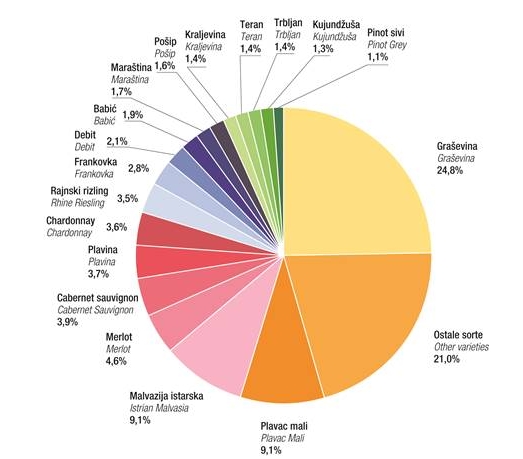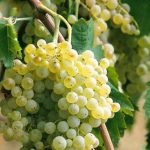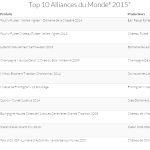Some interesting – and surprising – statistics released by the Croatian Bureau of Statistics relating to the vineyards of Croatia on September 29, 2016.
With its reportedly 130 indigenous grape varieties and vastly differing terroirs, Croatia is increasingly attracting the attention of the international wine world as an exciting wine destination offering something a little different to the more generic international grape varieties, but finding concrete information on the country’s vineyards has never been easy, and so a recent report from the Croatian Bureau of Statistics sheds some useful light on the situation with Croatian vineyards in the modern day. Some of the results are somewhat surprising.
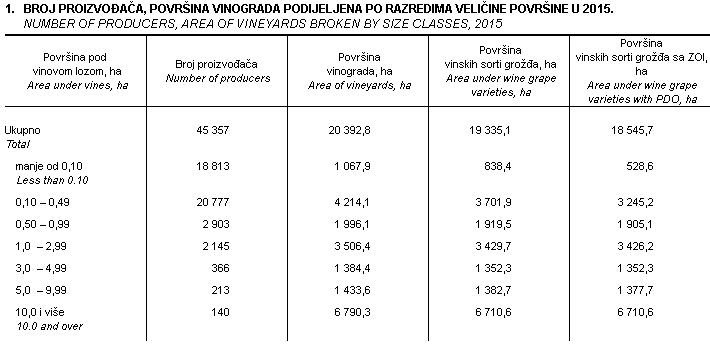
According to the statistics, there are more than 45,000 producers in this country of 4.2 million, testament to the fact that many families produce their own food and wine for domestic consumption. Of these, just 2,800 have more than a hectare under cultivation, and just 140 with 10 hectares or more, a key reason why Croatian winemakers struggle to compete on price with some of the larger wine producing countries.
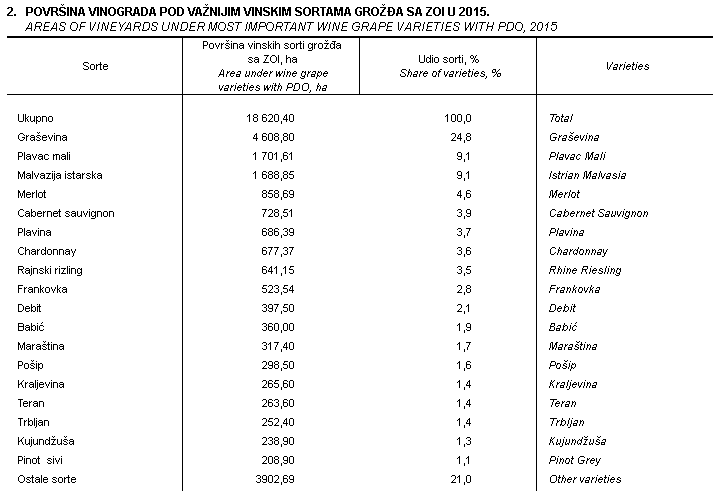
Almost all of the close to 200,000 hectares of vineyard under cultivation contain grapes of Protected Designated of Origin (PDO), with one grape variety domination, with almost a quarter of all grapes planted – the continental white variety of Grasevina, with more than 24%.
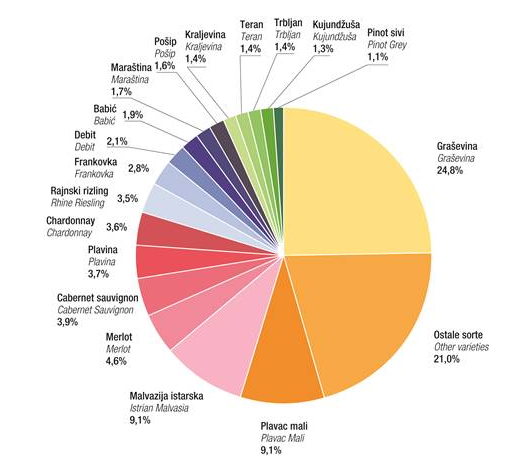
This is followed by the pride of Dalmatian red, Plavac Mali, and Istrian white, Malvazija, both at 9.1%, while three international sorts – Merlot, Cabernet Sauvignon and Chardonnay feature in the top seven varieties of this indigenous variety heartland.
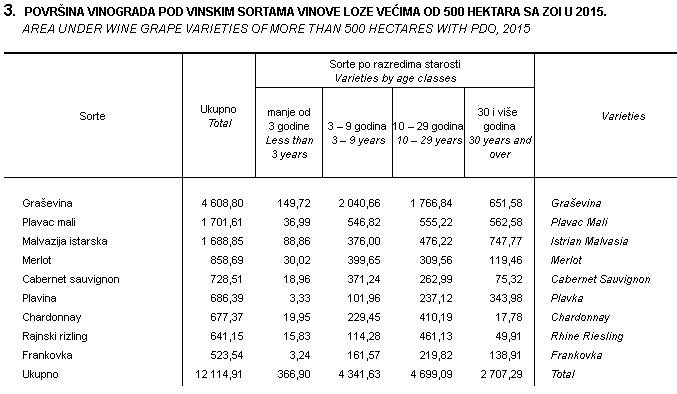
And while Grasevina is the dominant variety today, perhaps the most surprising statistic relates to the changing trends of vineyards over the last 30 years. While there are 250% more Grasevina vineyards these days than Malvazija, the Istrian variety was the most planted back in 1985, and approximately 45% of the Grasevina today has been planted in the last ten years. Perhaps not surprisingly, the planting of international varieties has been on the rise, while Plavac Mali has remained constant and Malvazija reduced. The lack of planting over the last three years in the table above will be due mostly to new rules regarding planting with Croatia’s accession to the EU in 2013.

